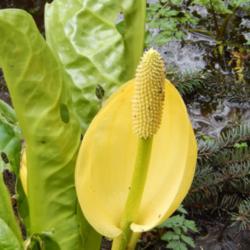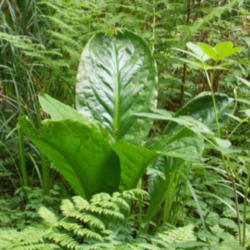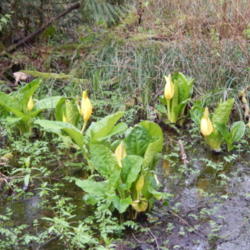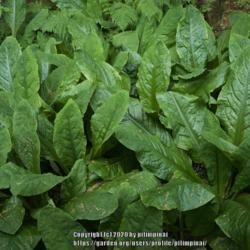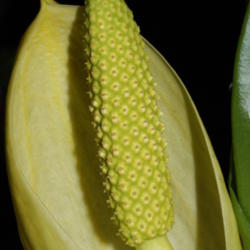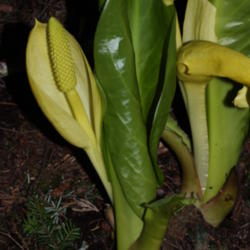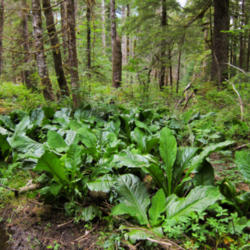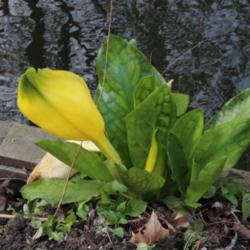| Plant Habit: | Herb/Forb |
| Life cycle: | Perennial |
| Sun Requirements: | Full Sun to Partial Shade |
| Water Preferences: | In Water Wet |
| Soil pH Preferences: | Slightly acid (6.1 – 6.5) Neutral (6.6 – 7.3) |
| Minimum cold hardiness: | Zone 5a -28.9 °C (-20 °F) to -26.1 °C (-15 °F) |
| Maximum recommended zone: | Zone 9b |
| Plant Height: | 2 to 4 feet (.6-1.2 m) |
| Leaves: | Malodorous |
| Fruit: | Showy Other: Small whitish-yellow berries, ripening to green. |
| Fruiting Time: | Late spring or early summer Summer |
| Flowers: | Showy Malodorous |
| Flower Color: | Yellow Other: Up to 17 inch high bright yellow spathe enclosing a spadix with small yellowish-green flowers. |
| Bloom Size: | Under 1" 6"-12" |
| Flower Time: | Late winter or early spring Spring |
| Underground structures: | Rhizome |
| Suitable Locations: | Bog gardening |
| Uses: | Water gardens |
| Propagation: Seeds: | Needs specific temperature: 55ºF-65ºF Days to germinate: 30-60 days Depth to plant seed: Sow at depth of approximately 1/4 inch. |
| Propagation: Other methods: | Division |
| Pollinators: | Flies Various insects |
| Miscellaneous: | Goes Dormant |
